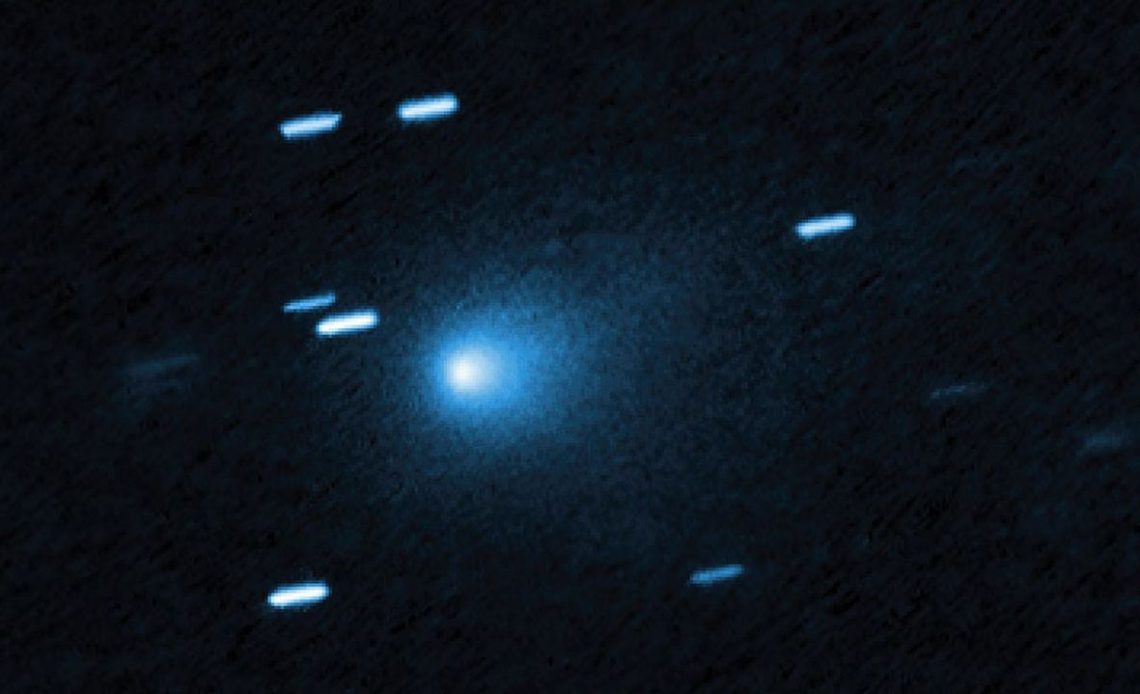
The fastest-moving objects are often the most challenging subjects to photograph – which means NASA scientists had a challenge ahead of them when the ATLAS comet warning system flagged the fastest solar system visitor yet. The Hubble Space Telescope has managed to capture the sharpest ever photograph of the comet known as 3I/ATLAS as it travels at 130,000 miles per hour / 209,215 kph.
The 3I/ATLAS, which was first spotted on July 1, has the fastest velocity of any solar system visitor to date, NASA says. The comet’s 130,000 mph speed is nearly 100 times the speed of some bullets.
The comet’s speed suggests that 3I/ATLAS may have originated from a very distant, developing planetary system, which means the comet could be a space fossil with clues about the universe’s history.
The challenge, of course, was how to photograph something moving 100 times the speed of some bullets and still get a sharp enough photograph that scientists could infer some data from the image. NASA put the Hubble Space Telescope up to the task, using the orbiting telescope’s onboard WFC3 charge-coupled camera.
The researchers used a single gyroscope to allow the camera to follow the movement of the comet, creating a sharper, more detailed image. The stars in the background of the image are streaked because the camera was moving in order to follow the quick-moving comet, much like the panning technique blurs the background of photos taken following fast action on Earth.
The resulting photograph is giving researchers a wealth of different information about the speedy solar system visitor. Researchers now estimate that the comet’s nucleus is between 1,000 feet (320 m) and 3.5 miles (5.6 kilometers) in diameter.
“No one knows where the comet came from,” said David Jewitt, the science team leader for the Hubble observations. “It’s like glimpsing a rifle bullet for a thousandth of a second. You can’t project that back with any accuracy to figure out where it started on its path.”
The 3I/ATLAS comet was first discovered by the Asteroid Terrestrial-impact Last Alert System (ATLAS) at the beginning of July 2025. While the comet isn’t Earth-bound, its speed indicates the comet could be billions of years old. Researchers will continue to study the comet until it passes too close to the sun to observe sometime in September, though it’s expected to be visible again on the other side of the sun around December.
Author: Hillary K. Grigonis
Source: DigitalCameraWorld
Reviewed By: Editorial Team



